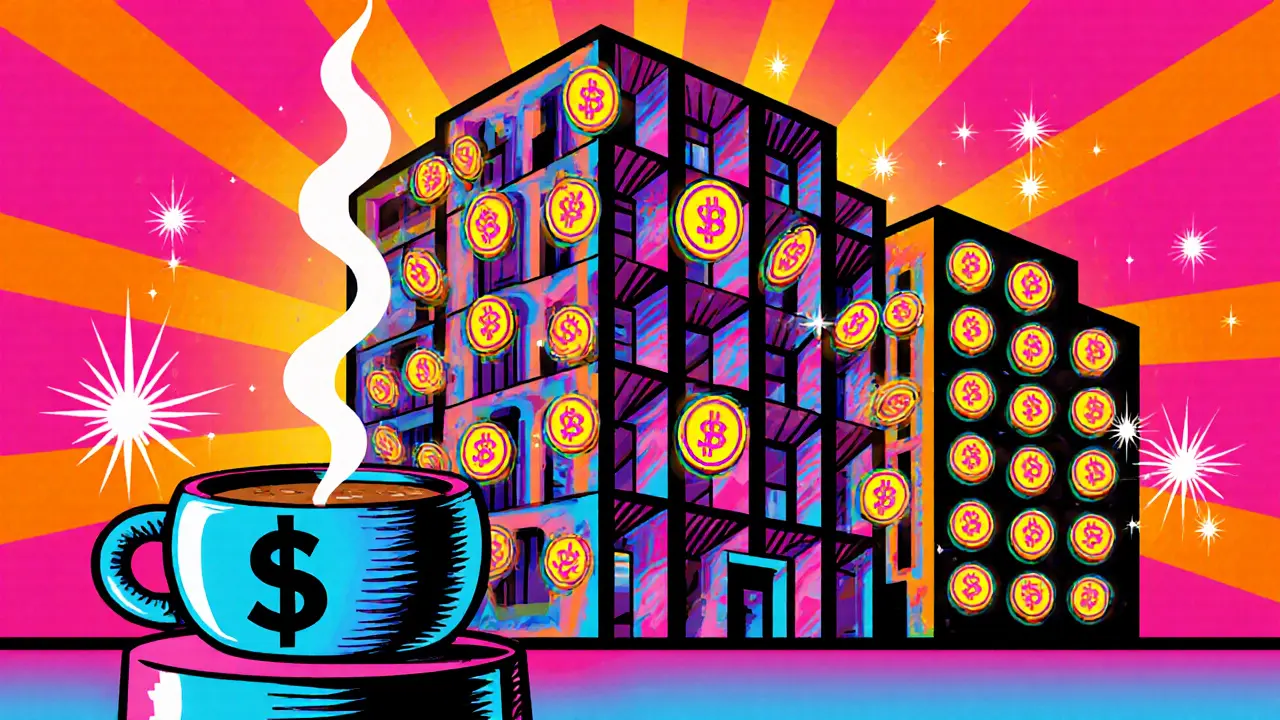RWA Tokenization: Turning Real‑World Assets into Crypto Tokens
When working with RWA tokenization, the process of converting real‑world assets like property, commodities or invoices into blockchain‑based tokens. Also known as Real‑World Asset tokenization, it bridges traditional finance and crypto. The core idea is simple: lock a physical or legal claim in a Smart Contract, self‑executing code that enforces token rules on the blockchain, then issue a digital representation that can be moved, traded or used as collateral. RWA tokenization encompasses real‑world assets, relies on smart contracts for trust‑less enforcement, and opens the door for decentralized finance platforms to provide liquidity.
Why DeFi matters for tokenized assets
Once a token exists, it needs a market. That's where DeFi, decentralized finance platforms that let tokenized assets be traded, borrowed or used as collateral steps in. A DeFi protocol can lock the token as collateral for a loan, or list it on a DEX for instant swapping. This creates continuous price discovery and unlocks yield opportunities that traditional asset owners rarely see. In practice, an investor can buy a tokenized piece of real‑estate on a DEX, stake it in a liquidity pool, and earn fees without ever stepping foot in the property. The triple "RWA tokenization requires smart contracts, DeFi enables liquidity, and investors gain new returns" captures the core loop driving the market forward.
But the bridge isn’t just technical – it’s legal. Every tokenized asset must respect the rules of the jurisdiction where the underlying claim lives. Regulatory compliance, the legal framework that ensures tokenized RWAs meet jurisdictional rules influences token design, disclosure requirements, and who can participate. Most projects work with legal counsel to embed KYC/AML checks directly into the smart contract or the onboarding flow. When compliance is baked in, custodians, investors, and regulators feel safer, and the token gains access to a broader pool of capital. In short, compliance shapes issuance, DeFi provides the market, and smart contracts hold everything together.
All of these pieces – the asset, the code, the finance layer, and the legal guardrails – form a complete ecosystem that’s still evolving. Below you’ll find guides, reviews, and deep‑dives that unpack each part: from airdrop strategies for new RWA projects to detailed looks at how carbon‑credit blockchains tokenize emissions, and even how token vesting structures affect token holder incentives. Whether you’re a trader hunting fresh yield, a developer building the next token bridge, or just curious about how a piece of land can become a tradable crypto, the articles ahead give you practical insights and real‑world examples to help you navigate the space.
What is E Money (EMYC) Crypto Coin? MiCA-Compliant RWA Blockchain Explained
E Money (EMYC) is the world's first MiCA-compliant blockchain built for tokenizing real-world assets like real estate and bonds. Learn how it works, its price, use cases, and why it's unique in the crypto space.
Legal Framework for RWA Tokens: How Real-World Assets Are Tokenized Under Global Regulations
RWA tokenization turns real assets like real estate and art into blockchain tokens. But without the right legal structure, these tokens are just digital files. Learn how MiCA, the Howey Test, and SPVs make RWA tokens enforceable under the law.
Real Estate Tokenization: How RWA Tokens Unlock Fractional Property Investment
Learn how Real Estate RWA Tokenization works, its benefits, risks, market outlook, and a step‑by‑step guide for investors looking to buy fractional property tokens.


